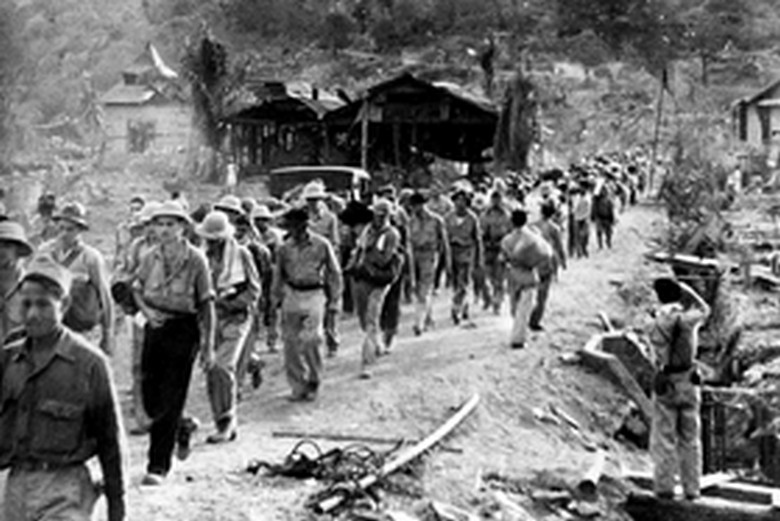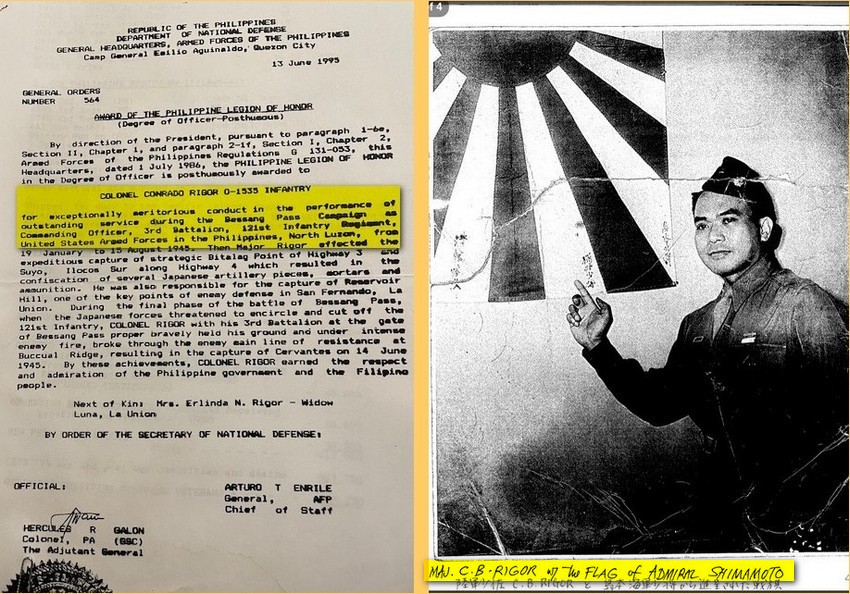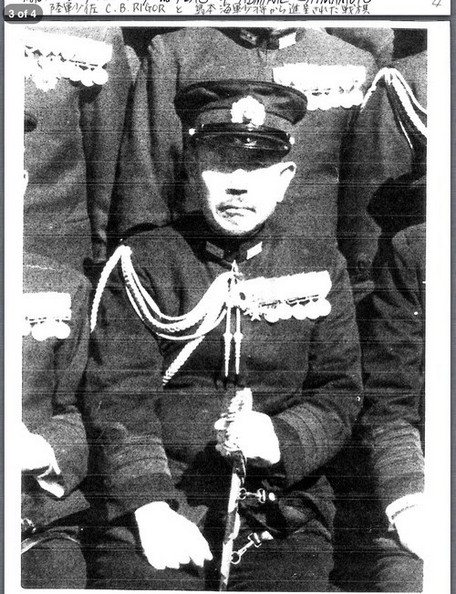

Bataan and the Death March as Seen by Some Filipino
Veterans
by Conrado (Sluggo) Rigor, Jr., UPD'60
The recently released article ("A
double dose of hell: The Bataan Death March and what came next") by CNN’s
Brad Lendon and reprinted in the Philippine Post drew attention and revived
opinions expressed by Filipino soldiers when they were still around as well as
surviving and aging veterans of the Pacific War.

A war history buff and a veteran’s son, I wish to add a few inputs to the
interesting episode about Bataan and the Death March. I am thankful that there
are recorders of wartime stories in the Philippines which many of our fathers
had hoped that a legacy of patriotism, courage and gallantry are enshrined in
our history as a freedom-loving people.
My own father passed away early at 46 but had been active as secretary general
of the Veterans Federation of the Philippines (VFP). As a young reservist
officer, he had led a battalion in the final battle that ended the Pacific War
in the Philippines. I have had numerous opportunities, as an advocate of aging
soldiers in Manila and in Seattle, to meet and speak to my father’s
comrades-in-arms. They all spoke profoundly about their aspiration to leave a
legacy to younger generations. Allow me to narrate briefly.


Vice Admiral Kyoguro
Shimamoto led the submarine sneak
attack on Pearl Harbor. He surrendered with Gen.
Yamashita
to Filipino soldiers at the battle of Bessang Pass.
Filipino veterans of that war have ironically tagged Bataan, Corregidor and the
Death March as “ignominious defeats,” a term used by a prominent military
officer-turned-political leader. (My family keeps and treasures a clear MP-3
audio recording of a eulogy this leader had delivered in May, 1960). Filipino
soldiers of the U.S. Commonwealth Army in WWII have lamented the fact that these
infamous wartime events have become more prominently known, creating a sad
impression of weakness of the Filipino’s military capability in war. They
collectively pray that a serious assessment and true accounting to balance such
tales of subjugation be undertaken by today’s historians, critics and
journalists.
In the celebrated book written by the USAFEE-North Luzon Commander Col. Russel
Volkmann, “We Remained,” he had paid uncommon tribute to the Filipino warrior as
“among the world’s finest.” He had focused on the northern Luzon front where
4,800 troops and top Japanese officers led by the feared Tiger of Malaya,
General Tomoyuki Yamashita, surrendered together with Vice Admiral Kyoguro
Shimamoto who had led the triumphant submarine sneak attack on Pearl Harbor
years earlier.
Indeed, shouldn’t it be time for military historians to focus on the glorious
triumphs of the Filipino soldier in the Pacific War? And to place Bataan and
Corregidor side-by-side with victorious battles like Bessang Pass, the rescue
from the Cabanatuan Concentration Camp of 600 American and Canadian POWs by
Filipino soldiers, and the Filipino’s brave underground guerilla operations?
Together with some colleagues, we have endeavored over the years, as a charter
member of the Sons & Daughters of the Defenders of Bataan & Corregidor, to raise
funds for a 2-year professorial chair in University of the Philippines’
Department of History and the National Historical Commission of the Philippines.
The academic project that we envision will support an academic research and
study to respond to the query: “How and What Precisely Was the Role of the
Filipino Soldier in Helping Win the Pacific War?”
We believe this is a key issue that has remained unanswered since the end of the
war. It is a fact that WWII was fought at the height of racial discrimination in
America so that After-Battle Reports in the Philippines, as Filipino military
historians have noted, were mostly, if not all, written by U.S. soldiers. To the
silent consternation of Filipino officers and men, this reportedly resulted in
minimizing the role of Filipino soldiers. It is also an underplayed and
hardly-known fact that the highest ranking Japanese officer in the Philippines,
General Tomoyuki Yamashita, led 4,800 of his men in a bloody retreat rampaging
through Manila, central and northern Luzon. In a three-month last stand,
Yamashita was cornered and had surrendered with high-ranking Japanese officers
to soldiers of a USAFIP-NL Filipino battalion in a fierce three-month long final
battle at Bessang Pass in the rugged Cordillera mountain ranges. It was in this
largely unknown, unheralded engagement, war veterans proudly relate, where the
last shots in the Pacific War were fired. It was in this battle that gallant
Filipino soldiers “wrapped themselves in glory,” as one surviving battalion
commander shared.
This battle, in the homeland and even here in the US, has never been afforded
enough attention. University of the Philippines historian-educator and WWII
specialist of Asian Studies, Prof. Rico Jose, has researched extensively on
various stages of the war with emphasis on the roles played by American,
Filipino and Japanese forces. He and his late historian-educator wife had
traveled several times to Japan to do in-depth research and validation of
accounts about the invasion, occupation and eventual surrender of the invaders
in the Philippines.
These largely unknown facts about WWII military history are important to us Army
Brats because it was our fathers who carried the brunt in defending the country
against invaders, a lesson that we feel is vital for patriotism to be sustained.